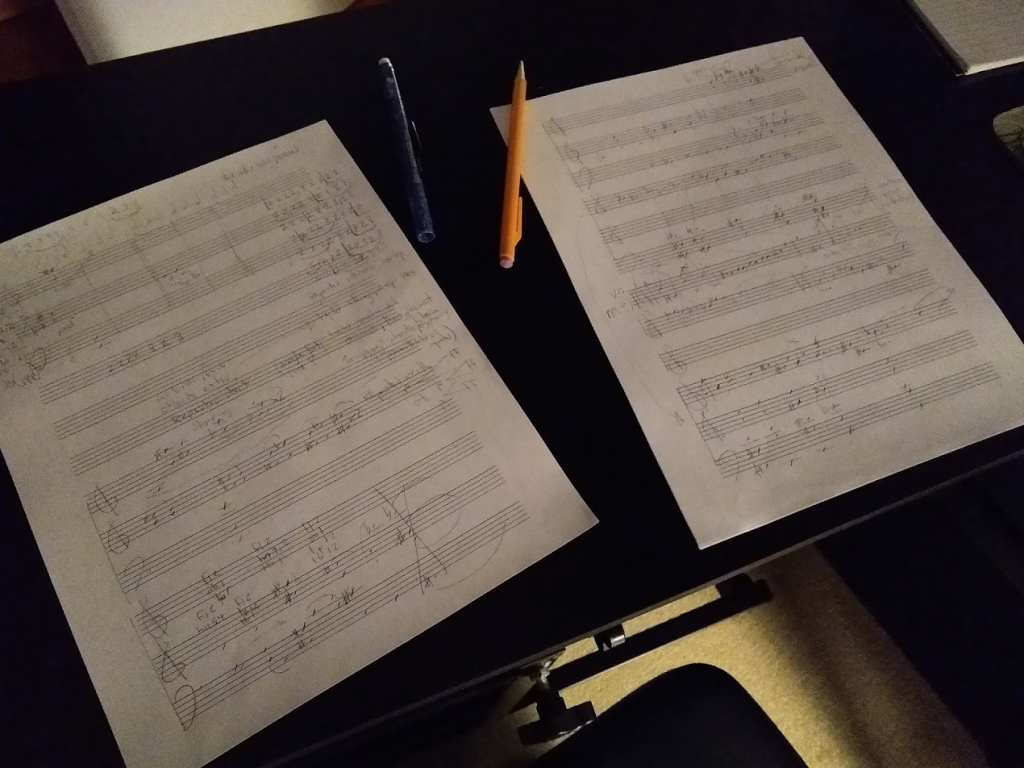Finishing up the last movement in the next day or so and knowing that the first movement is the final music that will be written is… confusing. Songs for the rock operas were always dramatically out-of-order, and endings could come before beginnings, but having done it before doesn’t diminish the creative uncertainty. The order of music-to-paper dictates which themes will become themes and so the first melodies written will seed the subsequent sections. My compositions are always dramatically structured–and built off of a general blueprint of sonic techniques–but the musically thematic ground gets laid when the first notes get written.
And yet writing the first movement last means that I can hint at what I know is to come. It can’t be a camp, musical overture type of collage, rather a reverse echo of the future.
Continue reading Symphony No. 1 – From finish to start
